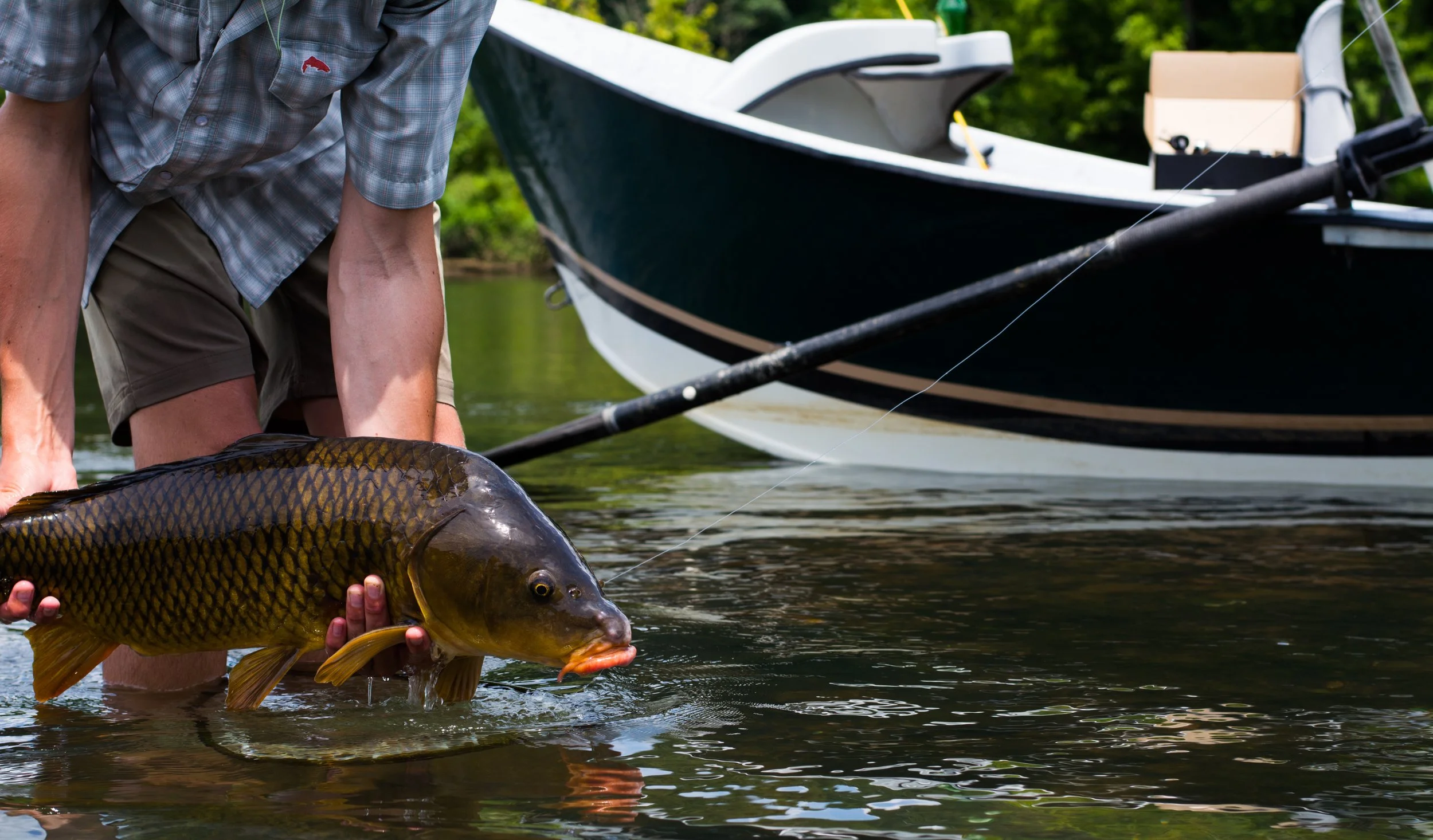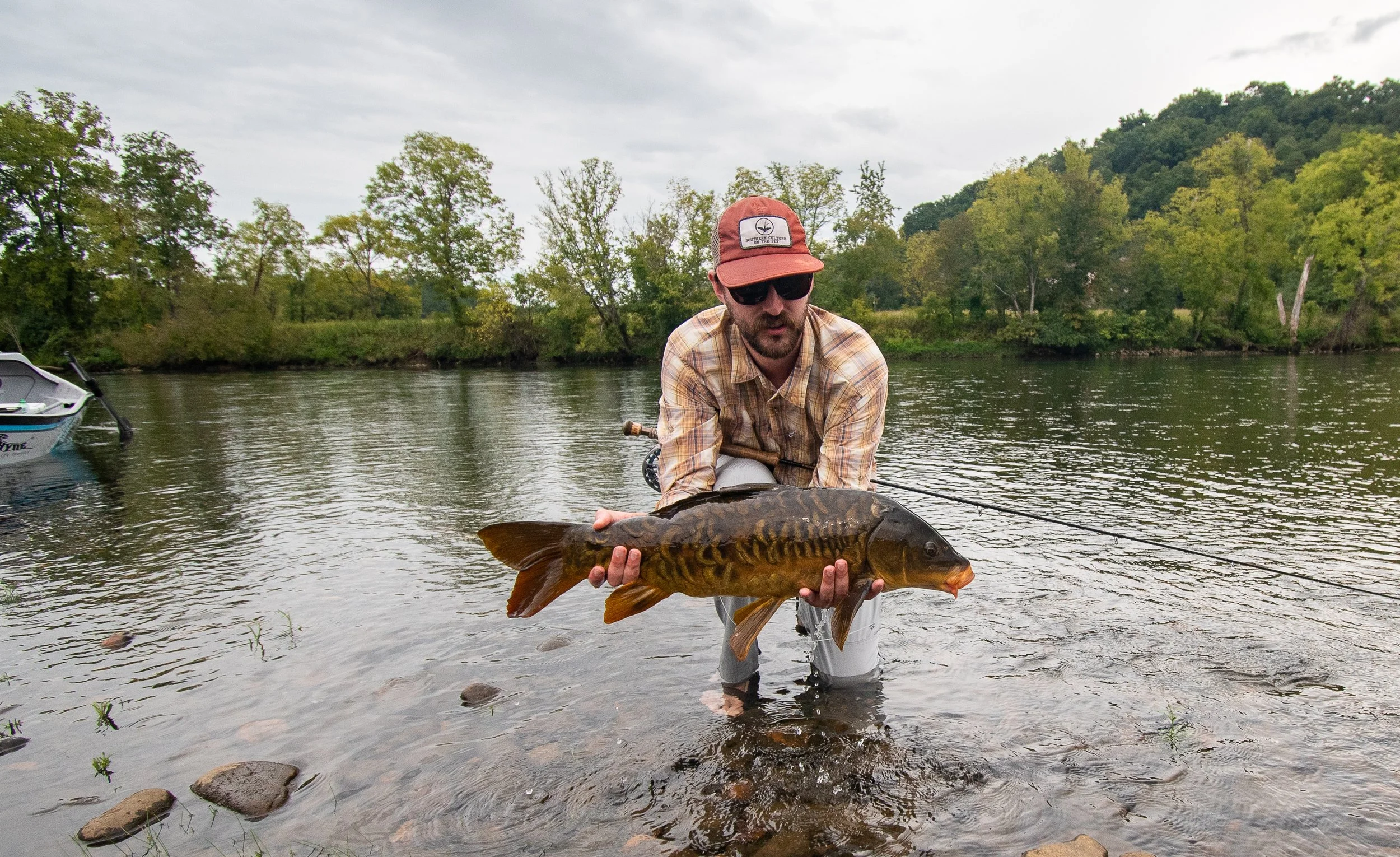Summer’s heating up and the carp are calling.
Looking for a fish that presents a casting challenge and puts a deep bend in your fly rod? You’re looking for a carp, and they’re probably right under your nose wherever you live. These fish, once dismissed as second-rate or a last resort, are now the target species of many anglers, with good reason. If you already have a stout rod, 5-weight to 7-weight, you’ve got the first requirement done. Many of us are always looking for ways to fly fish more and carp offer accessibility in the urban areas where many of us live. Beyond ease of access, though, these fish will make you a better all-around angler, and you’ll benefit when spotting picky trout, walking a bonefish flat, or fighting pre-spawn smallmouth. Don’t sleep on the carp that are probably swimming around in your backyard right now.
Andrew Smalling, our very own carp aficionado, shares some suggestions about how to find success with these worthy fly rod targets…
Carp flies – Flies with a heavy wire hook, generally size 4-8, riding hook up will provide solid hook sets. Bead chain or small lead dumbbells usually provide enough weight to get these flies down to the carp feeding zone. SLF dubbing, hen hackles, and rubber legs are generally components you want to have in your carp flies if you plan to tie your own.
A few flies to check out here in the shop…
Barry’s Carp Nymph – rusty brown
Clouser swimming nymph – rusty brown
John Montana’s Carp Hybrid – brown body pink tail
“What do I look for in a carp spot…and when?” – Fly fishing for carp is a great option most of the year, from late winter through early fall. In the coldest parts of the year, carp generally aren’t as active. It’s particularly a great option in late summer when other fisheries aren’t as active , or should be avoided in the hottest parts of our year.
Key features and options for carp spots. Many locations like these are probably a short drive from where you’re reading this right now.
Expansive shallow water flats – The typography of many large reservoirs in urban areas offer these open flats and bottom features appealing to carp.
Creek mouths into lakes and lake coves – Like many fish, the transition from creeks to open water offer cover and food that attracts carp.
Don’t overlook park ponds and urban retention ponds – Some of the best carp options might be right in your favorite suburban outdoor shopping mall or neighborhood.
Tips – Don’t get discouraged, carp fishing can be tricky but it’s a great way to build casting and sight fishing skills. Work slowly, stand and watch. Patient observation before casting can improve your understanding of fish behavior and help zero in on feeding or active carp.
Mornings can be most productive.
Keep an eye out for mud clouds to spot feeding fish.
Don’t cast until you can see the whites of their eyes. Practice drag-and-drop placement of your fly, casting ahead and past the feeding fish, then slowly dragging the fly across the top of the water to drop on the dinner plate in front of the fish.
Stop by Fly South to pick up some flies and hear more from Andrew about his latest carp adventures!





